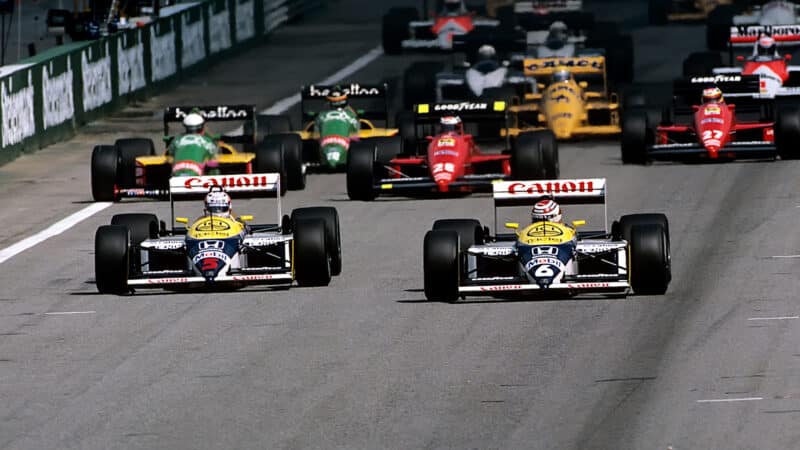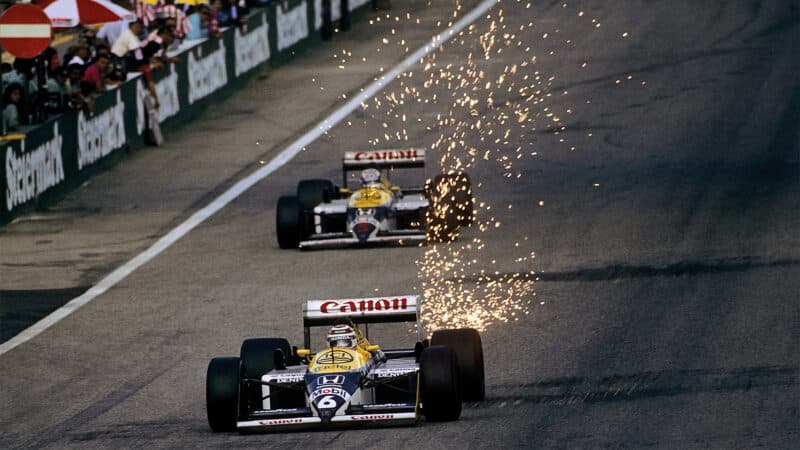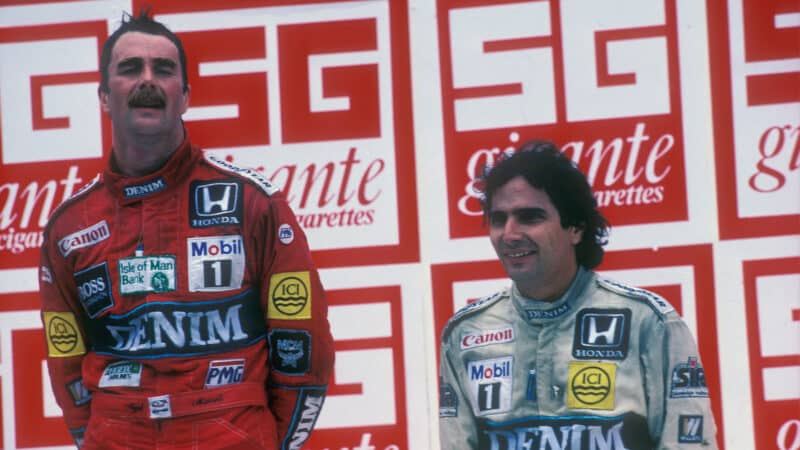A stunning charge in Spain raised some eye-brows as Mansell finished just 0.014sec behind Ayrton Senna‘s Lotus while Piquet retired on lap 39. Could the young Brummy really have the measure of his title-winning team-mate? Mansell certainly thought so, and his continued success in Belgium, Canada, France and Britain quickly turned Piquet sour.
“Mansell is argumentative, he’s rude and he’s got a really ugly wife,” the Brazilian told Playboy in the late 1980s. “He’s arrogant, and after he started winning races he started treating everyone really badly. Besides which, he’s written off piles of cars. No one wanted him to win.”
Mansell’s latter win at Brands Hatch appeared to have angered Piquet the most, as while the pair battled for the lead, the Brit firmly shut the door on his team-mate in the closing stages and subsequently drove off into the distance. On the podium afterward, the pair refused to shake hands.
Additional squabbles off track were quickly converted into more wheel-to-wheel clashes as both Mansell and Piquet continued to perform and Williams found its development stride. Their battle at Monza was particularly fascinating, as the chasing Piquet was forced to drive courageously up the inside of Curva Grande to surpass his team-mate and take the race win. Once again, little admiration was shared on the podium.
Ultimately, the squabbles meant neither driver were able to claim the title by the end of the season – points taken off each allowed McLaren‘s Alain Prost to close in after the team famously suffered tyre dramas in Adelaide, fanning the flames of rivalry ahead of ‘87. It would be Piquet who would have the last laugh.
Although he would only score three victories to his team-mate’s six, Piquet’s consistency was ultimately the factor which enabled him to capture a third world title. He scored eight podium finishes in 15 races — even after suffering a horrifying crash at Imola‘s Tamburello wall which would cause him to lose 80% from the depth of his vision.
“I only told anyone at the end of the year,” he told Motor Sport in 2013. “Otherwise, they would not have let me race. That’s the reason why I was so bloody slow!”
Second-placed Mansell had pushed the ailing Piquet: pulling off a magnificent dummy on his team-mate at the British Grand Prix on his way to victory — which rendered even James Hunt slightly speechless in the commentary booth. Similarly impressive performances in San Marino, France, Austria, Spain and Mexico were enough to put a dent in Piquet’s reputation as the best driver F1 had to offer, but a back-breaking crash in Suzuka ended Mansell’s chances.

Mansell and Piquet race wheel-to-wheel in Austria 1987
Getty Images
Several DNFs hadn’t helped his title challenge either, as well being found lacking in the F1’s extra-curricular areas.



